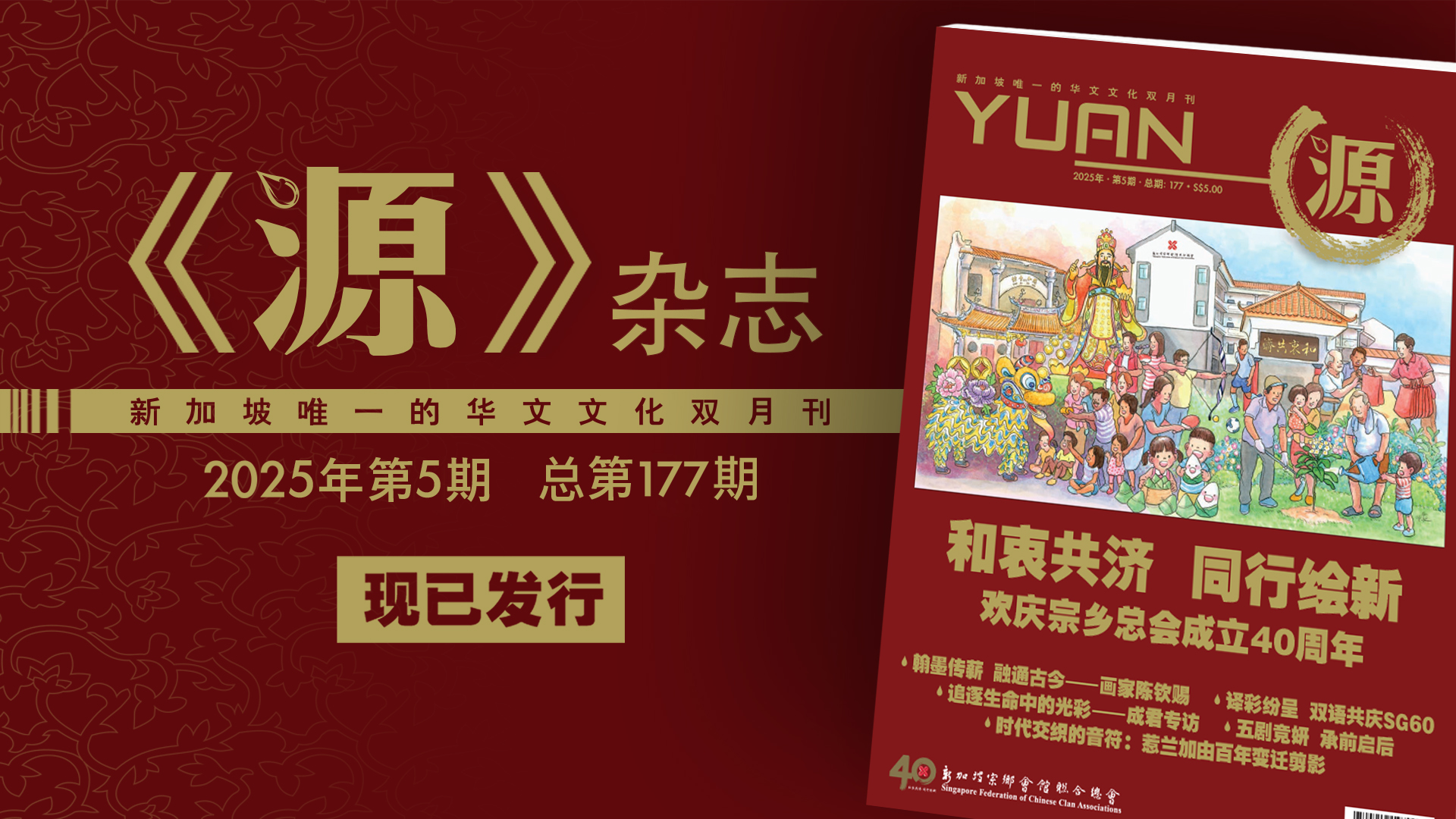南洋厦语片皇后:庄雪芳
文 · 杨明慧 图 · 苏章恺
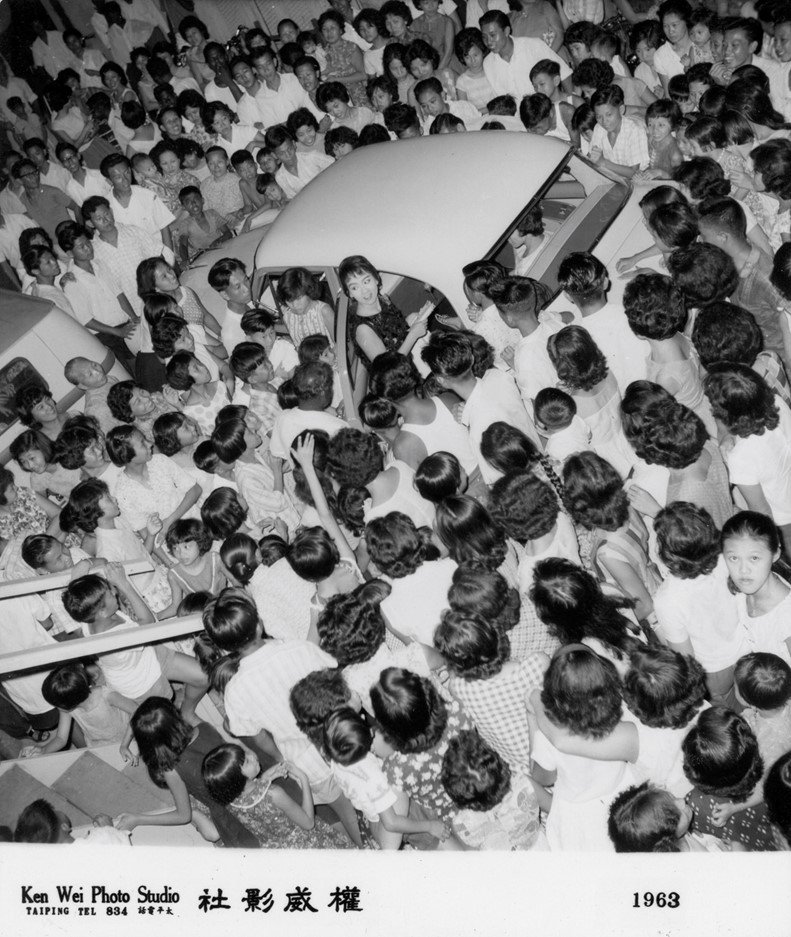
庄雪芳被影迷包围
以歌台起家的庄雪芳是一位多方位的表演艺人。在长途旅行尚未流行的时代,她带团在新加坡、马来亚、菲律宾等地巡演。她后来还参与厦语电影,成为公认的“厦语片”皇后,并自立门户成立厦语片制作公司。
庄雪芳是一位对歌台文化和厦语电影有着重要贡献的艺人。她出生于新加坡,在此地度过了童年和青少年岁月。
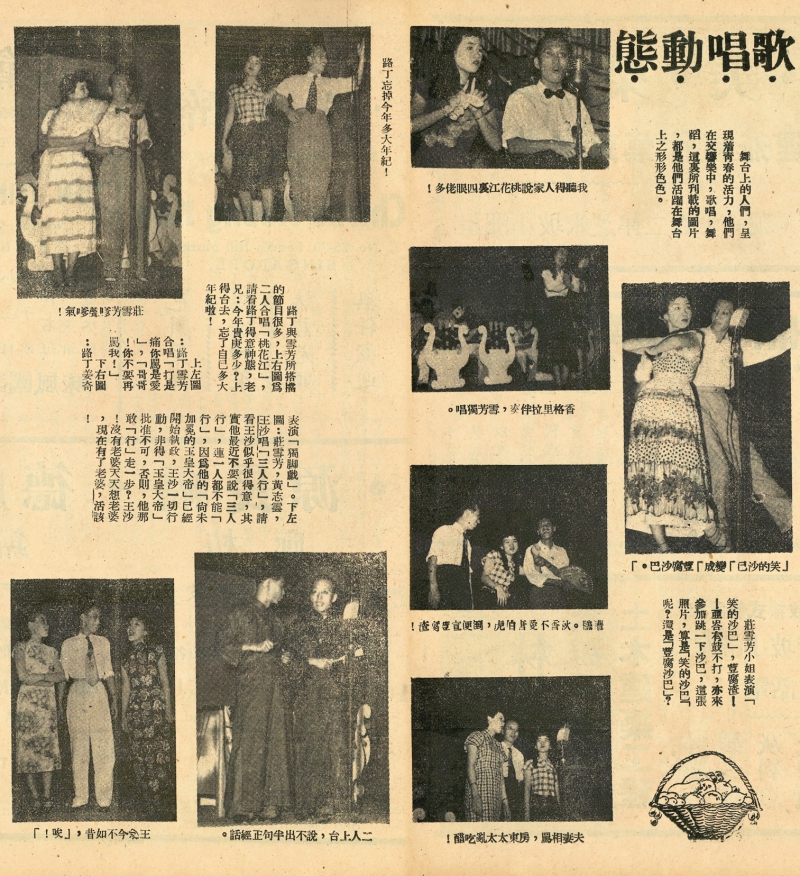
庄雪芳活泼多元的表演风格
1947年,庄雪芳年仅15岁就跃身成为新马著名的歌台明星。当时的庄雪芳,经常到新世界安乐亭歌台的后台去听歌。歌台前辈马荣(生卒年不详)见她活泼好学,又对舞台充满热爱,开始教她唱歌。后来庄雪芳得到在安乐亭表演的机会,开启了她的演艺生涯。这时期的歌台明星大多只是站着歌唱,不会有太大的动作,但庄雪芳另辟蹊径,向白言(1920-2019)等从上海移居新加坡的歌台表演前辈学习,发展出又唱又跳且多方位的独特台风,并积极参演话剧表演,名声大噪。随后,庄雪芳创立了白雪歌舞团以及之后的庄雪芳歌剧团,在长途旅行尚未流行的1940年代至1950年代,她带着歌舞团在新加坡和马来亚(远至吉打)各地巡回演出,甚至远到菲律宾。
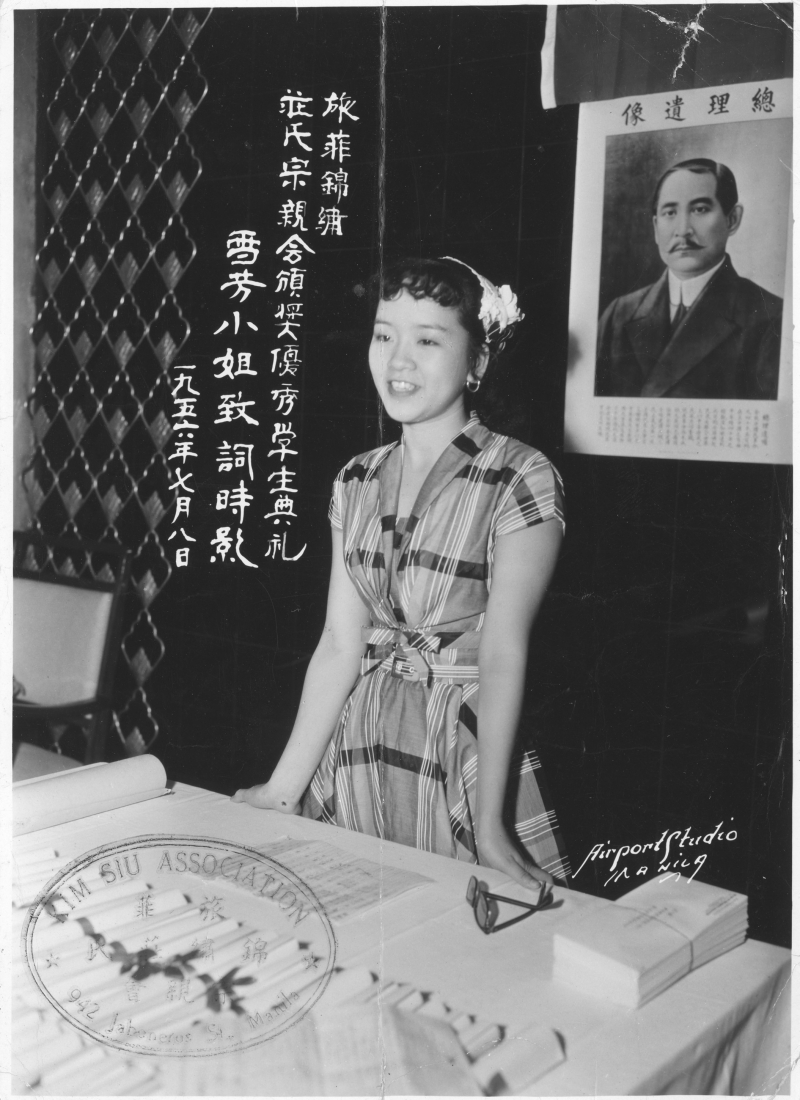
庄雪芳带团到菲律宾登台表演
“厦语片皇后”
在歌台界闯出名堂的庄雪芳,在厦语电影鼎盛发展的1950年代中期,受邀参演厦语电影。1957年,庄雪芳在国语片《神秘美人》里客串演出,表演伞子舞和绸子舞。同年,菲律宾华侨商人施维熊(生卒年不详),与华夏电影公司和新加坡的荣华影业公司合作,邀请庄雪芳到香港主演厦语片《天涯歌女》(又名《歌女白兰花》)。庄雪芳与吴荣华(1923-2015)谈妥条件后,便飞往香港展开她的电影生涯。《天涯歌女》于1958年在新加坡首映,立即造成轰动,从此庄雪芳便将事业重心转向电影制作。从第一部《天涯歌女》到1971年宣布退出影坛,庄雪芳一共参演约30部厦语片,数目可观,且全都担任主角。凭着她的知名度,以及在厦语影业里的成就,庄雪芳被冠上“厦语片皇后”的美誉。
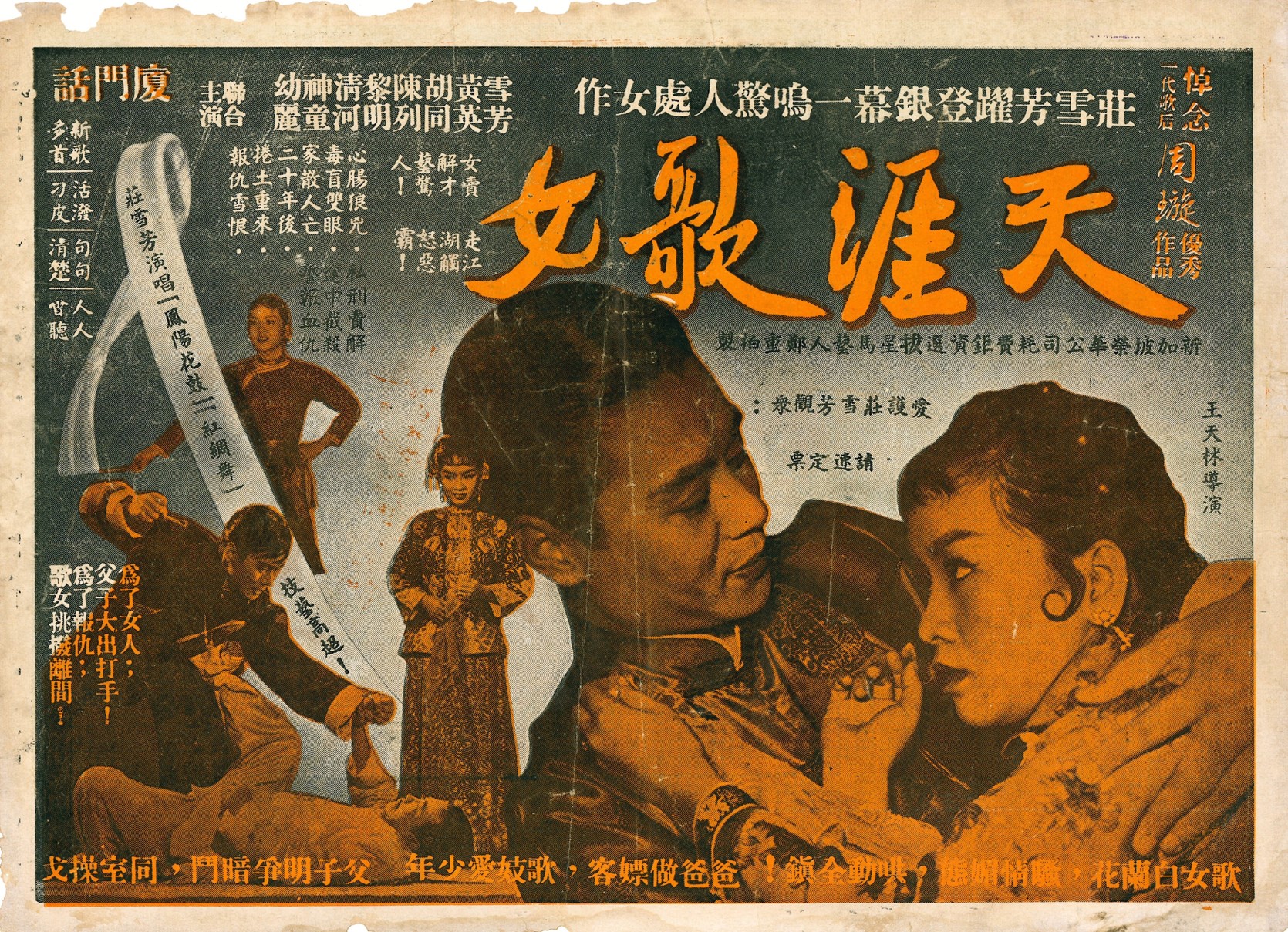
《天涯歌女》戏桥
庄雪芳在厦语电影圈打响名堂之后,便如同当初在歌台闯荡时那般,创建起自己的厦语片制作公司——庄氏影业公司。不管是在影响力、数量或是质量上,庄雪芳参演及制作的厦语片无疑壮大了1950年代厦语电影的声势与地位,使之足以与当时的国语片、粤语片平起平坐,形成学者所谓的华语电影“三脚鼎”(三足鼎立)的局面。
庄雪芳转战电影业以后,并未完全暂停她的歌台事业。当时的华语电影圈子里流行“随片登台”,即配合片子的放映,巡回登台演出。跃身影圈的庄雪芳遂常到台湾及东南亚各地随片登台,她所到之处,往往吸引大批影迷和歌迷追随,把场地挤得水泄不通。
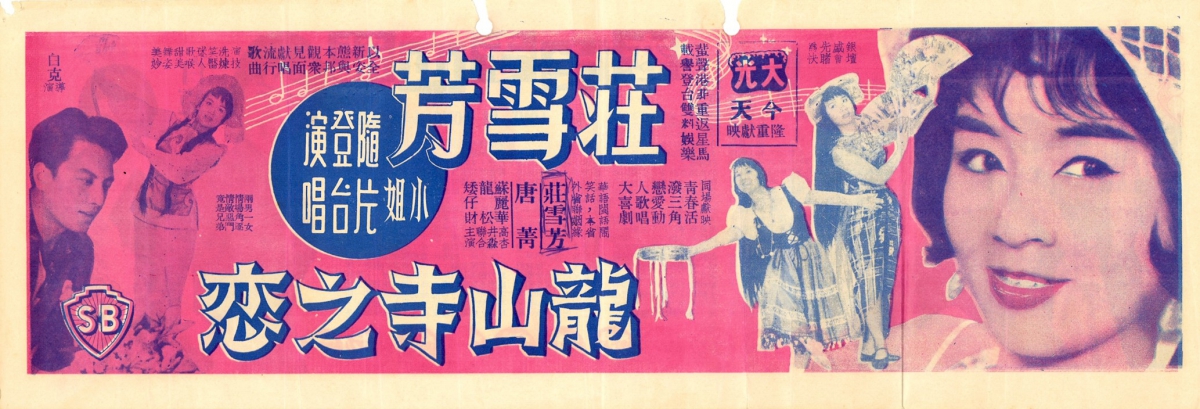
《龙山寺之恋》戏桥
庄雪芳主演的最后一部电影,一般认为是1962年首映的台湾电影《龙山寺之恋》。她在片中饰演只谙国语(普通话),不谙闽南语(厦语)的外省人。以这样的角色为庄雪芳的电影事业做个总结,其实正微妙地反映了当时厦语片逐渐式微,被国语、粤语片取代的趋势。此后庄雪芳逐渐告别歌台与影坛,回到新加坡,之后再度登台多是为了慈善义演。
(作者为新加坡南洋理工大学中文系助理教授)
The Queen of Amoy-dialect Cinema
Singapore artiste Chng Soot Fong (also known as Chong Set Png, Chong Sit Fong or Zhuang Xuefang) is a well-known getai performer and Amoy-dialect film actress, who is also known as the “Queen of Amoy-dialect Cinema”.
Chng’s performing career began in getai. In 1947, at the age of 15, she was already a prominent getai star in Singapore and Malaya. Impressed by her passion for the stage, senior getai performer Ma Rong (birth and death years are unknown) decided to mentor her in singing.
Unlike most getai performers who simply stood and sang, Chng developed a unique style of combining singing with dance movements, inspired by getai pioneers like Bai Yan (1920-2019). Chng’s fame grew as she participated in stage drama performances. She later founded the Bai Xue Song and Dance Troupe and the Chng Soot Fong Opera Troupe, which toured extensively across Singapore, Malaya, and even the Philippines.
After gaining recognition, Chng was invited to appear in Amoy-dialect films in their heyday in the 1950s. In 1957, she had a cameo in the Mandarin film The Lady of Mystery, showcasing her talent in umbrella dance and silk dance. That same year, she travelled to Hong Kong and starred in Amoy-dialect film The Wandering Songstress. In 1958, The Wandering Songstress premiered in Singapore and was immediately a box office hit. This marked Chng’s career transition to the film industry, where she would subsequently earn the title “Queen of Amoy-dialect Cinema” for her achievements.
After gaining a reputation, Chng founded her own production company, Chng Soot Fong Film Company, which produced Amoy-dialect films. The Amoy-dialect films Chng acted in and produced contributed to the prominence of Amoy-dialect cinema in the 1950s, bringing it on par with Mandarin and Cantonese-language films. Together, they formed the three pillars of Chinese-language cinema.
Despite her transition to the film industry, Chng remained active in singing. She frequently performed on stage in Taiwan and various Southeast Asian locations to accompany film screenings, which drew a large audience everywhere.
Chng’s last film is generally thought to be Taiwanese film Romance at Lung Shan Temple (1962), where she played a Chinese mainlander who spoke in Mandarin rather than the Minnan dialect. This reflected a wider trend of the decline of Amoy-dialect films, in favour of Mandarin and Cantonese films. Chng retired from the stage and film industry in 1971, returning to Singapore, and largely limiting her stage appearances to charity performances.


